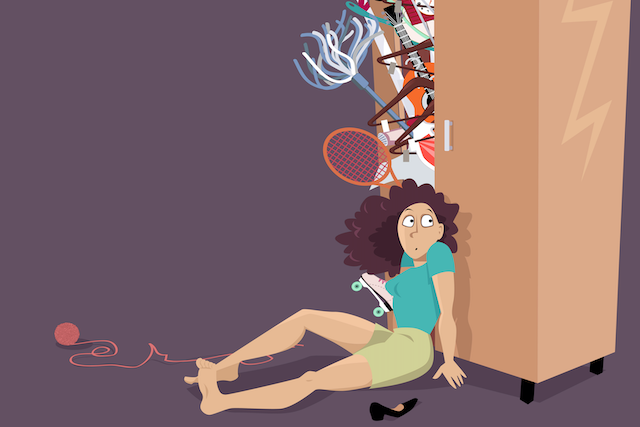Do you have that one piece of clothing tucked away in the depths of your closet that you just can’t seem to let go of? Maybe it’s an old t-shirt from college, a worn-out pair of jeans, or a dress that holds memories of a special occasion. We all have those garments that evoke a strong emotional attachment, and there’s a fascinating psychological reason behind why we hold onto them.
Clothes play a significant role in our lives, shaping the way we present ourselves to the world. They reflect our personal style, express our identity, and can even boost our confidence. But beyond the practicality and aesthetics lies a deeper emotional connection that is difficult to explain. It’s as if these pieces of fabric have a hold on our hearts, capturing moments and memories that are too precious to release.
One reason behind our emotional attachment to clothing is the memories associated with them. Every outfit we wear becomes a part of the story of our lives. That concert t-shirt represents that incredible night when you danced your heart out with your best friends. Those jeans, faded and ripped in all the right places, are a testament to the adventures and experiences you’ve had wearing them. It’s not just fabric; it’s a tangible reminder of the past, allowing us to relive those cherished moments whenever we catch a glimpse of it.
These emotional connections to clothing go beyond just experiences; they can also be tied to significant relationships in our lives. Think about that hand-knit sweater your grandmother made for you. It’s not just a piece of clothing; it’s a symbol of her love and care. Every time you put it on or catch a whiff of its familiar scent, you feel a sense of comfort and connection to her. These garments become vessels for emotions, carrying the essence of the people we love and the memories we’ve shared.
Another intriguing aspect of our attachment to clothing is the emotions they make us feel when we wear them. Have you ever noticed how a particular outfit can instantly change your mood and demeanor? It’s the power of association. Perhaps that dress you wore on a first date fills you with a sense of excitement and butterflies. Or maybe that well-worn hoodie feels like a warm hug, providing a sense of security and comfort. These garments become like emotional armor, providing a sense of familiarity and stability in an ever-changing world.
On a deeper level, our attachment to certain items of clothing may also be rooted in our desire to hold onto our past selves. As we grow and evolve, our tastes and preferences change. The clothes we wear become markers of who we were at different stages of our lives. Parting with these items can feel like saying goodbye to a part of ourselves and acknowledging the passage of time. Holding onto them becomes a way of holding onto the person we used to be, a tangible reminder of the journey we’ve embarked upon.
While our emotional attachment to certain clothes is understandable and even beautiful in its own way, it’s crucial to strike a balance. Hoarding clothes can clutter our physical space and make it harder to move forward. The key lies in finding ways to honor those emotional connections while still embracing growth and change. One approach is to curate a capsule wardrobe, selecting a limited number of items that hold the most meaning for you. The rest can be donated, passed on, or repurposed in a way that maintains their sentimental value.
In the end, our emotional attachment to clothing goes beyond the practicality of dressing ourselves. It’s a reminder that our lives are made up of moments and connections, and these garments serve as physical embodiments of those intangible treasures. So, the next time you find yourself holding onto a piece of clothing that seems too difficult to let go, take a moment to reflect on the memories and emotions it represents. Embrace the beauty of your attachment, but also remember that life is a constant journey of growth and change.
